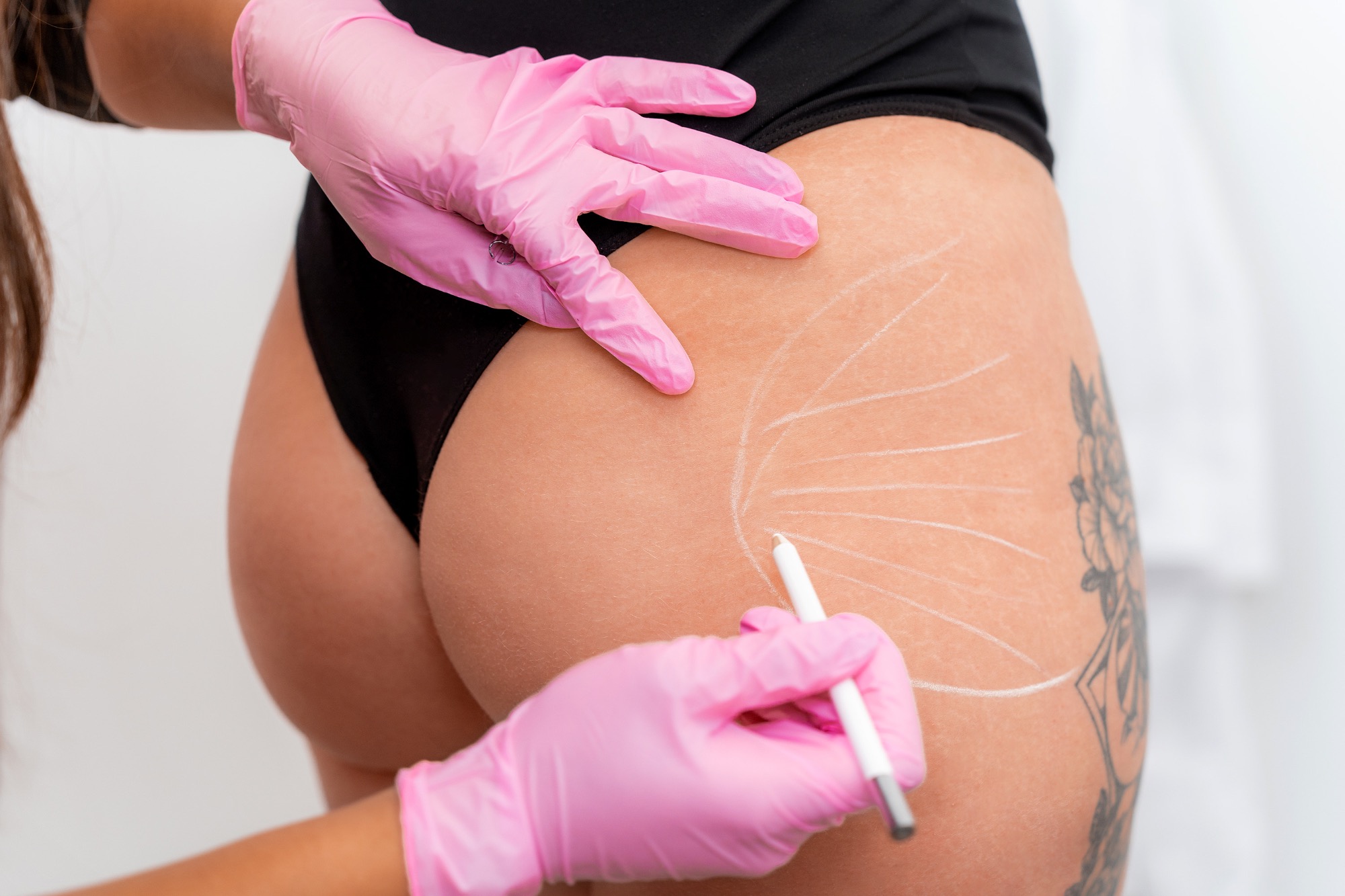
The pursuit of enhanced gluteal aesthetics has exploded into a global phenomenon, driven by shifting cultural ideals and the pervasive influence of social media. This surge in popularity for procedures like the Brazilian Butt Lift (BBL) and various non-surgical injections has inevitably created a fertile ground for misinformation. The conversation surrounding butt enhancement is now heavily polluted by pervasive myths, half-truths, and often dangerous falsehoods that obscure the clinical realities, risks, and achievable outcomes. These misconceptions, perpetuated by anecdotal evidence and unqualified sources, range from trivial inaccuracies about recovery to catastrophic misjudgments about safety. Dispelling these myths is not just about clarifying facts; it is a critical step in ensuring patient safety, managing realistic expectations, and highlighting the profound difference between medically sanctioned procedures and illicit, unregulated practices. A genuine understanding of this field requires moving past the sensationalized claims and focusing instead on surgical physiology, long-term graft survival, and the critical distinction between appropriate, autologous fat transfer and risky, synthetic injections.
The Conversation Surrounding Butt Enhancement Is Now Heavily Polluted by Pervasive Myths
One of the most persistent and dangerous myths suggests that any doctor can safely perform butt enhancement procedures because they involve “simple injections.” This falsehood minimizes the extraordinary anatomical expertise required, particularly for a surgical BBL. The procedure demands not only artistic vision for contouring but also an intimate, three-dimensional understanding of the gluteal region’s complex vascular anatomy. The high mortality rate associated with BBL historically stemmed from the accidental injection of fat into the deep gluteal veins, leading to fatal fat embolism. This specific risk makes the procedure far from simple. Only highly trained, board-certified plastic surgeons who adhere to updated safety protocols—which mandate placing fat only in the subcutaneous space above the muscle fascia—possess the knowledge necessary to mitigate this life-threatening risk. Attributing the procedure’s success or safety to general medical training is a myth that continues to endanger lives.
Only Highly Trained, Board-Certified Plastic Surgeons Possess the Knowledge Necessary
A common misconception among patients is the belief that every bit of fat transferred during a BBL will remain in place permanently. This leads to unrealistic expectations about the final volume. The idea that all fat survives is clinically false. Fat grafting is a biological transfer of living tissue, and not all transplanted adipocytes successfully establish a new blood supply in their new location. The typical long-term graft survival rate, or “take rate,” is highly variable, often falling within the range of 50% to 70%. The remaining portion of the transferred fat is naturally reabsorbed by the body in the months following the surgery. Therefore, the immediate post-operative size is intentionally an overcorrection, or an exaggerated projection, to account for this predictable volume loss. Patients who believe the final result will equal the immediate post-surgical size will inevitably be disappointed when the expected and necessary reabsorption occurs, highlighting the need for transparent pre-operative counseling regarding this biological certainty.
The Immediate Post-Operative Size Is Intentionally an Overcorrection
The allure of non-surgical butt injections often relies on the myth that they are a zero-downtime procedure. While it is true that non-surgical enhancement avoids the lengthy recovery associated with general anesthesia and large incisions, the recovery is far from instantaneous. The process requires a strict, weeks-long adherence to positional restrictions, which is the procedure’s true downtime. Patients must strictly avoid sitting directly on the treated areas to prevent the migration and clumping of the injected filler material, which could destroy the aesthetic outcome and lead to palpable lumps or asymmetry. Furthermore, managing the initial swelling, bruising, and soreness requires reduced activity for the first one to two weeks. Downplaying this critical period of non-weight-bearing and restricted activity is a myth that leads to patient non-compliance and a high risk of poor results.
The Myth That Implants Provide a More Natural Look Than Fat is Prevalent
Within the discussion of surgical enhancement, the myth that implants provide a more natural look than fat is prevalent. Gluteal implants, which use a silicone shell filled with semi-solid silicone, offer fixed volume and projection, but they can sometimes look and feel firm, particularly in leaner patients. They are also prone to issues like rippling or being visible at the edges if the patient lacks sufficient overlying tissue. Autologous fat (transferred from the patient’s own body during a BBL) integrates with the existing tissue, meaning the result moves, feels, and ages exactly like natural tissue. It is pliable and soft, offering a much more authentic and seamless contour transition, particularly when performed correctly in the subcutaneous plane. Implants are best suited for patients who lack sufficient donor fat, but for most people, the integration of one’s own fat offers the most physiologically and aesthetically natural long-term result.
Fitness Alone Cannot Specifically Alter the Shape of the Gluteal Contour
A deeply ingrained myth, particularly promoted by fitness enthusiasts, is the idea that intense targeted exercise can achieve the same results as surgical or non-surgical enhancement. While resistance training (like squats and lunges) can certainly increase the volume of the underlying gluteal muscles (gluteus maximus), fitness alone cannot specifically alter the shape of the gluteal contour in the way that surgical fat redistribution or filler placement can. A BBL reshapes the entire torso by removing fat from the flanks, lower back, and waist—creating a profound hourglass illusion—and strategically adding it to specific quadrants of the buttocks for projection and curve. Exercise cannot selectively remove fat from the waist and deposit it into the outer gluteal area. Therefore, the ability to sculpt the silhouette is unique to aesthetic procedures, a fact often overlooked by those who simplify the procedure’s goal to mere size increase.
Synthetic Fillers for Gluteal Enhancement Pose Extraordinary Health Dangers
Perhaps the most alarming and irresponsible myth is that any cheap injectable filler found online is safe for buttock augmentation. The reality is that the use of non-medical grade, unregulated, or off-label synthetic fillers for gluteal enhancement pose extraordinary health dangers. Illicit substances like industrial silicone, hydrogel, or PMMA injected in massive quantities—often by unlicensed individuals—carry severe risks, including permanent disfigurement, chronic infection, migration throughout the body, skin necrosis, and fatal embolisms. The only materials approved for cosmetic use are those that have undergone rigorous testing, and even their use requires extreme caution. Confusing these highly dangerous, illicit injections with medically sanctioned, volume-appropriate fillers or the patient’s own autologous fat is a myth that has led to countless injuries and deaths globally, necessitating a stark and absolute clarification.
The Implants Must Be Replaced or Removed at Some Point
Many patients, particularly those considering gluteal implants, believe they are a permanent, one-and-done solution. This is a myth that ignores the lifespan of a medical device. The implants must be replaced or removed at some point in a patient’s life. Like any medical device, gluteal implants are not designed to last indefinitely. While modern implants are durable, they can fail, shift, or cause complications over time, often necessitating revision surgery after 10 to 15 years. This requirement for eventual maintenance or removal is an inevitable, non-negotiable reality that must be factored into the patient’s long-term planning and financial forecast, directly contradicting the myth of perpetual permanence.
Fat Transfer Is Not a Substitute for Weight Loss
Another common misunderstanding is the belief that a BBL can solve generalized obesity or is a primary method of weight reduction. Fat transfer is not a substitute for weight loss and is not intended to treat morbid obesity. The procedure is designed for body contouring—reshaping the figure by redistributing localized, stubborn fat deposits. Surgeons typically recommend that patients be at or near their stable, ideal body weight before undergoing a BBL. Patients who undergo the procedure while significantly overweight will see diminished contouring results and may face higher surgical risks. The fat harvested and transferred is intended for aesthetic enhancement, not for the removal of large, life-threatening quantities of visceral fat, making the procedure a tool for sculpting, not for systemic weight management.
Silicone Gel Rupture Does Not Always Result in Immediate Collapse
Due to media portrayal of older silicone products, patients often believe a silicone implant rupture will cause immediate, noticeable collapse. Silicone gel rupture does not always result in immediate collapse with modern, highly cohesive gels. Newer generation silicone is designed to be semi-solid and “gummy.” If the implant shell is compromised, the material tends to hold its shape and remain contained within the fibrous capsule that surrounds the implant, leading to a silent rupture. This absence of immediate visual change is why surgeons mandate routine MRI surveillance for silicone implants. This need for routine, proactive screening is a key fact that directly debunks the myth that a silicone failure will always be outwardly obvious.
The Long-Term Success is Fundamentally Tied to the Patient’s Lifestyle
Finally, a myth exists that the surgeon’s work is the sole determinant of the outcome. In reality, the long-term success is fundamentally tied to the patient’s lifestyle and post-operative habits. Once the fat has successfully integrated into the gluteal area, those fat cells behave like any other fat cell in the body: they swell with weight gain and shrink with weight loss. Significant fluctuations in body weight will directly and profoundly alter the size, shape, and harmony of the augmented buttocks and the contoured donor areas. Maintaining a stable, healthy weight following the procedure is essential for preserving the sculpted results achieved by the surgeon, making patient adherence to a healthy lifestyle the ultimate long-term determinant of success.
